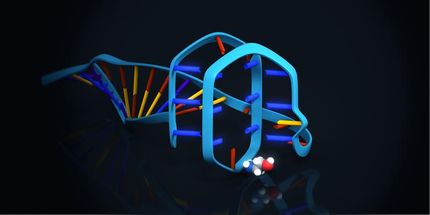Prion study reveals first direct information about the protein’s molecular structure
Advertisement
A collaboration between scientists at Vanderbilt University and the University of California, San Francisco has led to the first direct information about the molecular structure of prions. In addition, the study has revealed surprisingly large structural differences between natural prions and the closest synthetic analogs that scientists have created in the lab. Prions are the infectious proteins responsible for human Creutzfeldt-Jakob disease, bovine spongiform encephalopathy, or "mad cow" disease, scrapie in sheep and several other related nervous system disorders in mammals. For a number of years, scientists have been using the tools of genetic engineering to create synthetic versions of these particles so they could study them more easily. Although researchers have made particles that appear identical to natural prions, they have had trouble duplicating their infectious behavior. "We expected to find subtle differences, but we found major differences instead," said Gerald Stubbs, professor of biological sciences at Vanderbilt University. "Although we cannot say for certain that the differences we've seen can explain why natural prions are so infectious, there is a good chance that they are closely related." The study, which was published in the Proceedings of the National Academy of Sciences, was a joint effort of the Stubbs laboratory and that of Stanley Prusiner at the University of California, San Francisco, who received the Nobel prize in 1997 for the discovery of prions. "Our results will aid in attempts to create the infectious synthetic prions that are needed to figure out how prions work and ultimately to find cures for the diseases that they cause," said the lead author of the study, Holger Wille, assistant adjunct professor of neurology in the Institute for Neurodegenerative Diseases, which is based at UCSF and directed by Prusiner. Prusiner's group was the first to succeed in making infectious prions in the test tube. However, these prions are not nearly as infectious as the real thing. Six years ago, Prusiner contacted Stubbs, who is a world authority on determining the molecular structures of fibrous materials, and asked if he was interested in collaborating on an effort to characterize the detailed structure of prions. It didn't take much convincing. "I've always been interested in prions, so I readily agreed," said Stubbs. Prions, because of their association with mad cow disease, are the most notorious of the amyloids, which are insoluble clumps of fibrous protein that play a role in a number of neurodegenerative diseases, including Alzheimer's, Parkinson's and Lou Gehrig disease, as well as some other common illnesses, including type II diabetes. "It is particularly difficult to determine the molecular structure of fibrous materials like these because they have an intrinsically high level of disorder," Stubbs explained. When viewed with an electron microscope, which can magnify images up to one million times, the natural and synthetic prions look nearly identical. They both clump together to form microscopic filaments. At a magnification of approximately one hundred thousand times, the only visible difference is the width of the filaments: the synthetic material shows a wider distribution of widths than the natural material. The Stubbs lab used unconventional X-ray diffraction methods to get the first details of the molecular structures of natural prions and Prusiner's synthetic prions. The researchers found that the synthetic prions were shaped something like a ladder. Based on electron microscopic images, the Prusiner lab had proposed that the natural prions have a more complex, three-sided cylindrical shape, and the X-ray experiments supported this proposal. "The natural, infectious prions are folded into a much more complicated shape," said Stubbs. Proteins are molecules that are folded into shapes that determine their biological properties. Prions and the other amyloids are cases in which proteins are misfolded into shapes that interfere with normal biological processes. "Normally, the cellular systems deal with misfolded proteins but, for some reason, these slip through the cracks," he said. Prions don't have any DNA in their make-up so they don't reproduce in a normal fashion. Instead, they spread by transforming proteins they come into contact with into prions by causing them to misfold. "Our data on prion structure is an important step toward understanding prion infection," said Stubbs, "and understanding the process is essential before people can design drugs that restrict or prevent it."























































